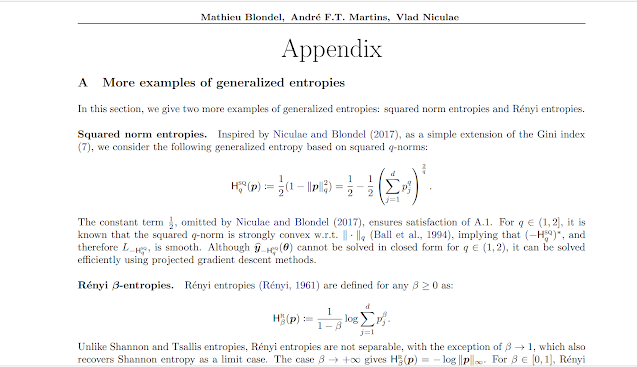I asked ChatGPT to make a satire on physicists doing machine learning for the first time. Boy, oh boy, did it give me a good satire.
It was a fine Monday morning in the prestigious physics department. Coffee was brewed, chalk dust floated in the air, and equations crawled like spiders across blackboards. But something was different. Something… off. A tremor of confusion rippled through the corridors as the physicists gathered for their weekly meeting. Today was not about quantum entanglement or gravitational waves; today, they had entered the brave new world of machine learning.
Dr. Thompson, a renowned particle physicist who once made headlines for theorizing a sixth-dimensional particle, sat at his desk glaring at his laptop. "I don’t get it," he muttered. "What’s an epoch? And why does my model keep overfitting?" His finger hovered over a button that ominously read Run Code, as if pressing it might accidentally simulate the heat death of the universe.
Meanwhile, in the corner of the room, Professor Ivanov was vigorously typing Python code on a terminal screen. Ivanov was famous for deriving the quantum field theory of socks, yet now found himself writing something called a “neural net.” Having spent decades mastering the calculus of tensors, he stared at the TensorFlow documentation as if it were a poorly translated IKEA manual.
"This can't be harder than the renormalization group theory," Ivanov whispered to himself, unconvincingly. His model failed to converge for the seventh time. "I'll just add more layers," he declared with an air of misplaced confidence. "That’s how the brain works, right? More neurons, more intelligence!"
Across the hall, Dr. Patel was equally disoriented. After spending the last decade calculating dark matter distributions, she was now facing something even more elusive: hyperparameters. She clicked through the parameters in her notebook.
“Learning rate... momentum... regularization?” She paused, a frown growing on her face. “Sounds like the settings on a blender.”
Undeterred, she set the learning rate to 42, confident that the answer to everything would solve this machine learning conundrum. Alas, the model promptly exploded into a sea of NaNs (Not a Number), a result she hadn’t seen since her days of calculating infinities in string theory.
“Of course, NaNs,” she scoffed, “the true fundamental particles of deep learning.”
Meanwhile, the younger grad students, who were already fluent in machine learning buzzwords, lurked in the background. They had been waiting for this moment. "You have to use dropout and batch normalization, Professor," one of them advised with a grin, clearly relishing their newfound expertise over the once-untouchable professors.
"Dropout?" Thompson repeated. "You mean like how I feel after running this model for three hours with no results?" The room chuckled, but the grad students pressed on, eyes gleaming with the vigor of freshly downloaded Kaggle datasets.
"Also, try stochastic gradient descent," another student added. "It's like regular gradient descent, but, you know... stochastic!"
Then there was Dr. Li, the department's cosmologist, who was taking the most radical approach. "I don’t need machine learning," she proclaimed. "I’ll just derive the optimal weights myself." Hours later, she was seen attempting to analytically solve the backpropagation equations, pencil in hand, sweat pouring down her face. The grad students looked on in horror.
“You could just let the computer optimize the weights, you know…” one suggested timidly.
“Nonsense!” Li snapped. “If I can solve the equations of the universe, I can solve this!”
As the day wore on, more physicists succumbed to the absurdity. Dr. Williams, an experimentalist known for his work on superconductors, was now building neural networks like they were Lego blocks. His lab was covered in graphs. Each failed model led to a new theory.
“I’m onto something big,” he said, pointing at a chart of a loss function that looked suspiciously like a sine wave. “I call it oscillating accuracy. This could be a new phase of learning!” His eyes gleamed with the fever of discovery.
By 5 p.m., everyone had given up on their physics research and fully embraced the chaos of machine learning. Ivanov’s model had ballooned to 400 layers, requiring the computational power of CERN to train. Dr. Thompson was on his fifth coffee, muttering something about the curse of dimensionality and swearing vengeance on whoever invented ReLU activations. Meanwhile, Dr. Li had retreated to a dark corner, insisting that she was "so close" to deriving the weights by hand.
And yet, amid all the chaos, the physicists had unknowingly embraced one of machine learning’s greatest truths: no one really knows what’s going on half the time.
Finally, Dr. Patel stood up, weary but enlightened. "I’ve come to a conclusion," she announced to the room. "Machine learning... it's just statistical mechanics. But with better marketing."
The room erupted in laughter and nods of approval. It was official: physicists doing machine learning for the first time was not so different from the universe they studied—full of mystery, randomness, and moments of unexpected brilliance.
As the physicists packed up their laptops, they felt something they hadn’t felt in years: the excitement of being a beginner again. Maybe this machine learning thing wasn’t so bad after all.



